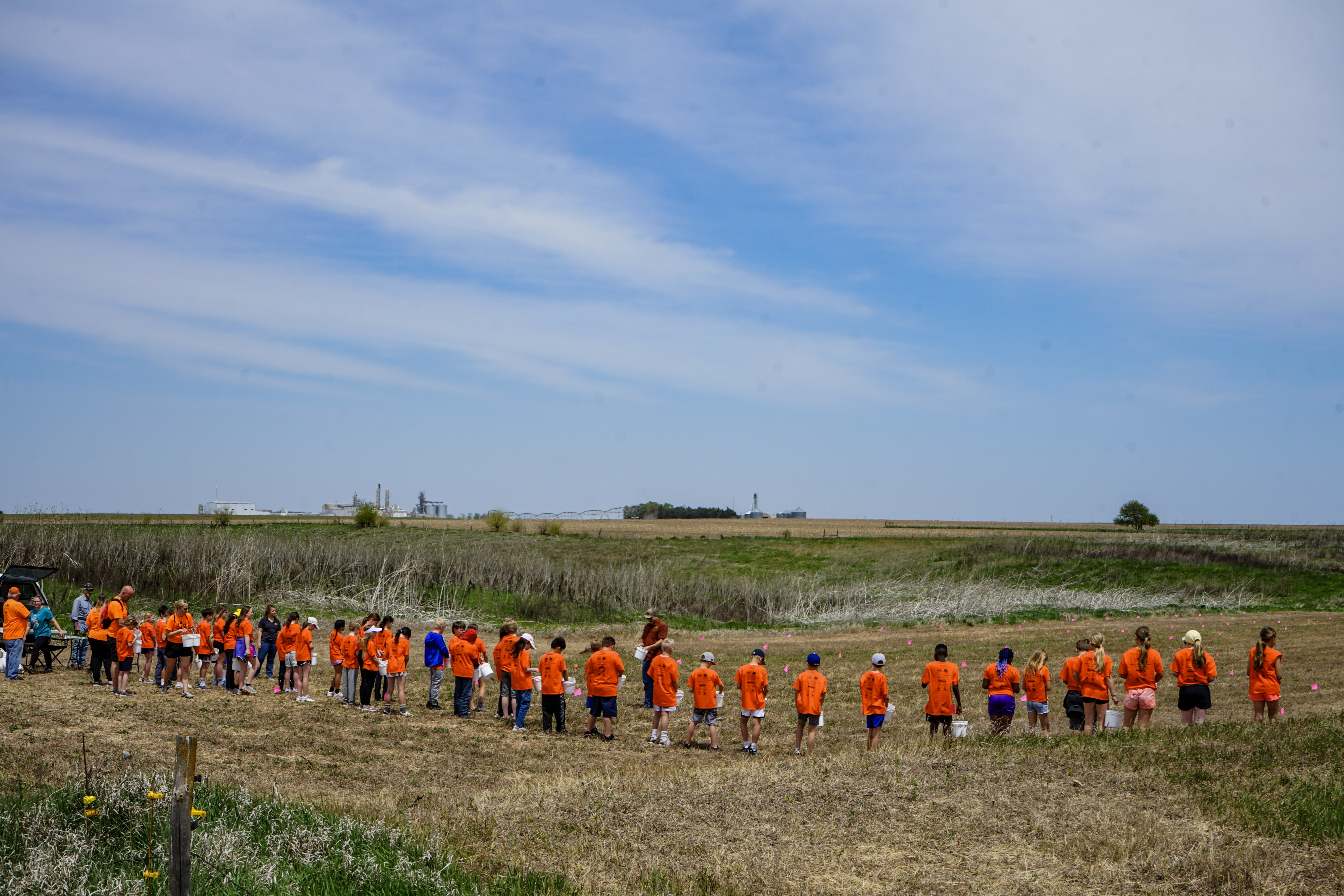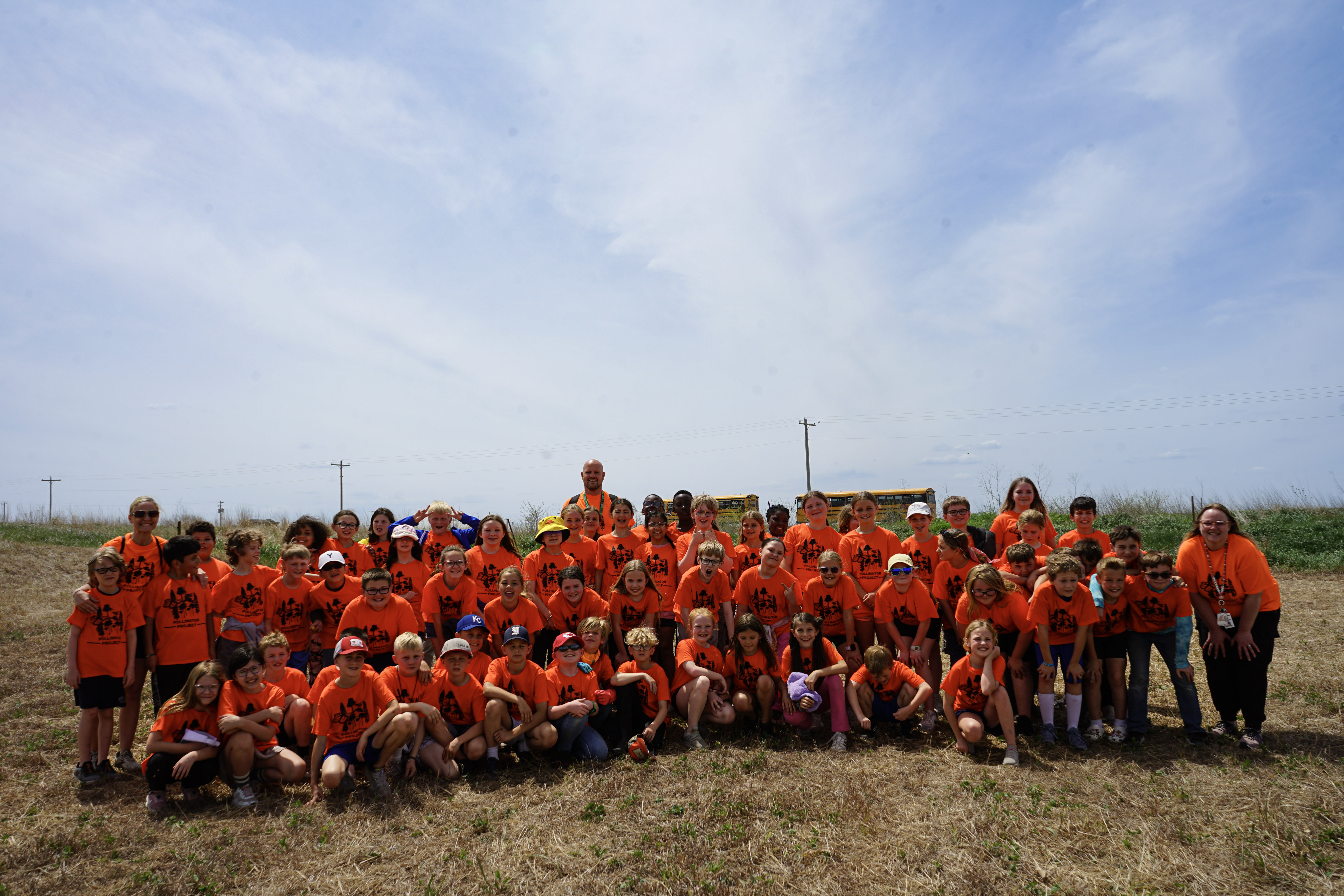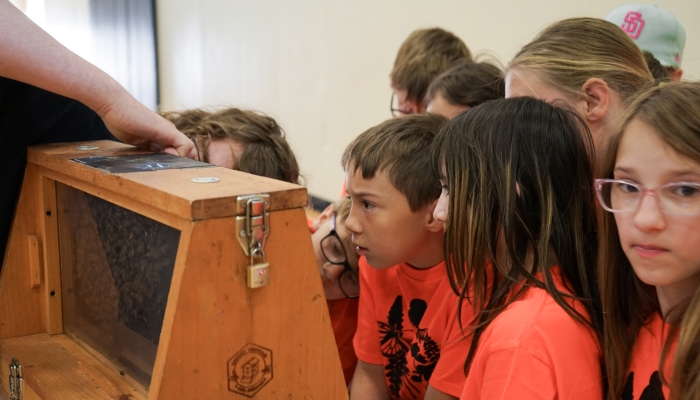Pollinator event celebrates bees, birds, butterflies, and prairie ecosystems
York-area 4th graders get hands-on nature education
It would be a far less delicious world without pollinators. That was one of the key messages from the annual pollinator day activity hosted by Pheasants Forever in York County. The day included activities for 130 area fourth graders from public and parochial schools, and was organized by Josh Miller, a science teacher at York High School who also raises pheasants.
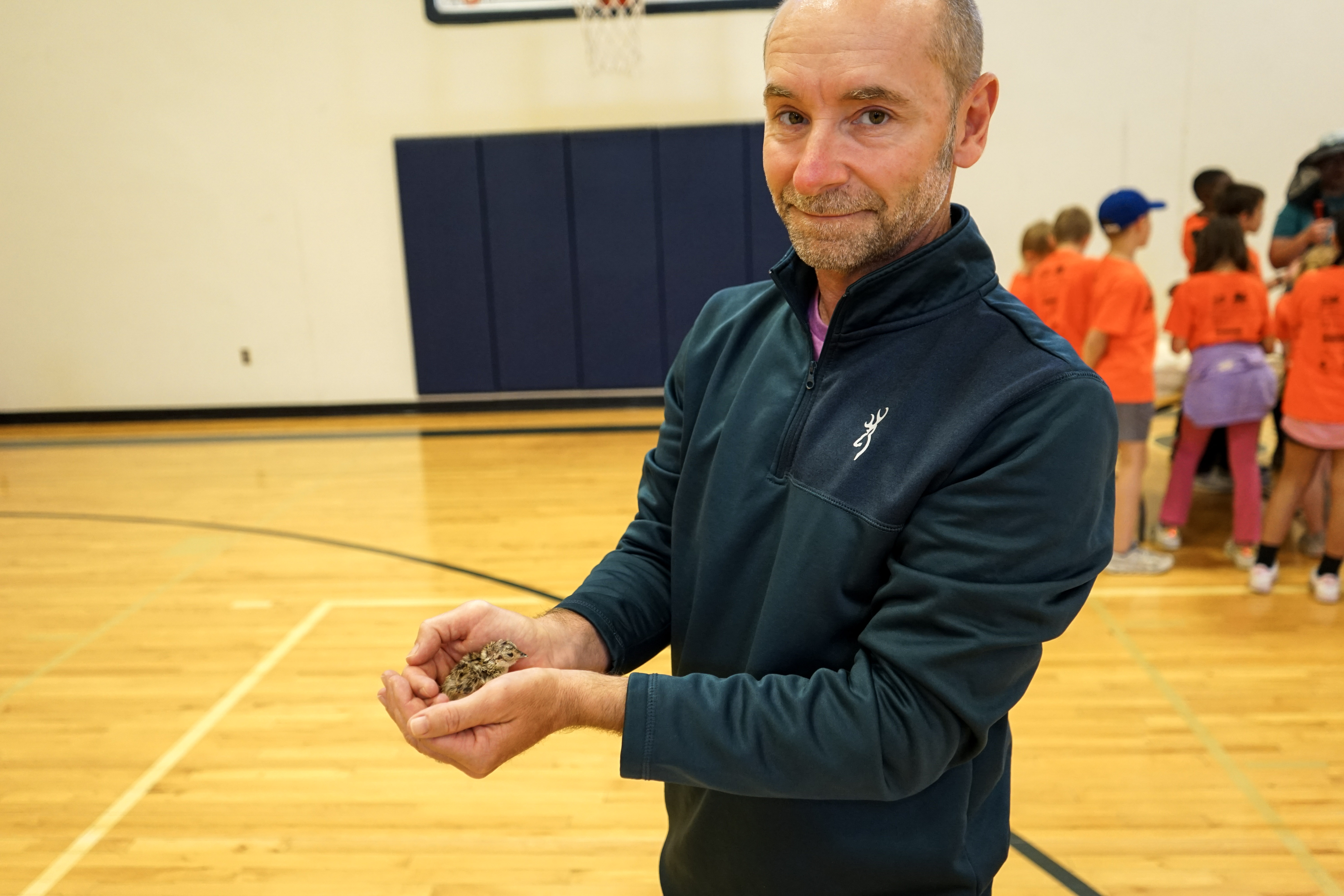
Using the ingredients of a pizza, an ice cream sundae, and a taco to illustrate the point, Pheasants Forever educators helped students understand the important role of pollinators. As they imagined a world without pollinators, they removed items from each of those foods to see what they would have left. What remained was a pizza crust, a taco shell, and not a lot else. The message was clear: if you like to eat, you should care about pollinators.
At the beginning of the event, some students admitted that they thought bees were creepy, but by the end, most students said they thought bees were cute and cool.
The kids were full of questions.
“How come the bees just die when they sting you?” one child asked Shelby Kittle, a PhD student from the UNL bee lab, who was one of the presenters at the event.
The end of a honeybee’s stinger is kind of like a fishhook, said Kittle. Its barbed shape makes it an effective defensive weapon as attaches to the victim’s flesh, however, when the bee flies away part of its body is left behind and it can no longer survive. Bees don't really want to sting you, she explained. If you pay attention, they give you plenty of warning signs before they sting. “Bees are patient teachers,” she said, showing the kids her bee net hat and hive management tools.
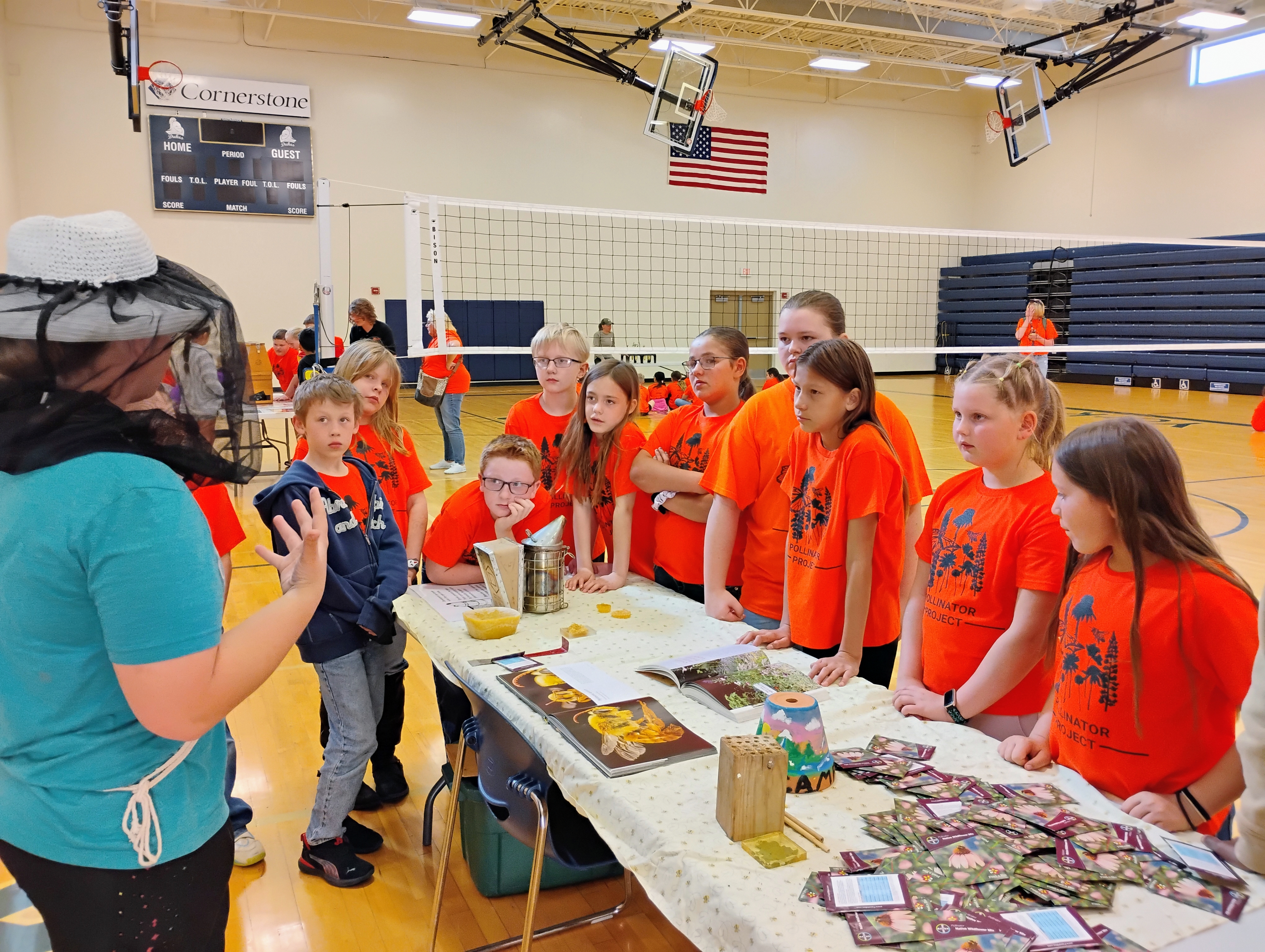
“Do bees hibernate?” asked another. Honeybees do not hibernate, she explained. Instead they cluster inside their hive, eat their stored honey, and flap their wings to generate heat through the cold winter months.
“How does the smoker work?” kids wanted to know as they squeezed the bellows to create little puffs of smoke scented air. Kittle showed where the fire would be lit in the bottom of the device and explained that the smoker doesn’t make bees sleepy. Instead, it tricks the bees into thinking there is a wildfire nearby. Their instinctual response is to go into the hive and get a belly full of honey to sustain them for a long journey if they need to flee. When they are full of honey, they move slowly and aren’t defensive. The smoke also disrupts the bees’ communication, as they signal each other of danger through pheromones. The smell of an anxious colony of bees is similar to banana Laffy Taffy, she explained. Bees can also communicate through dancing.
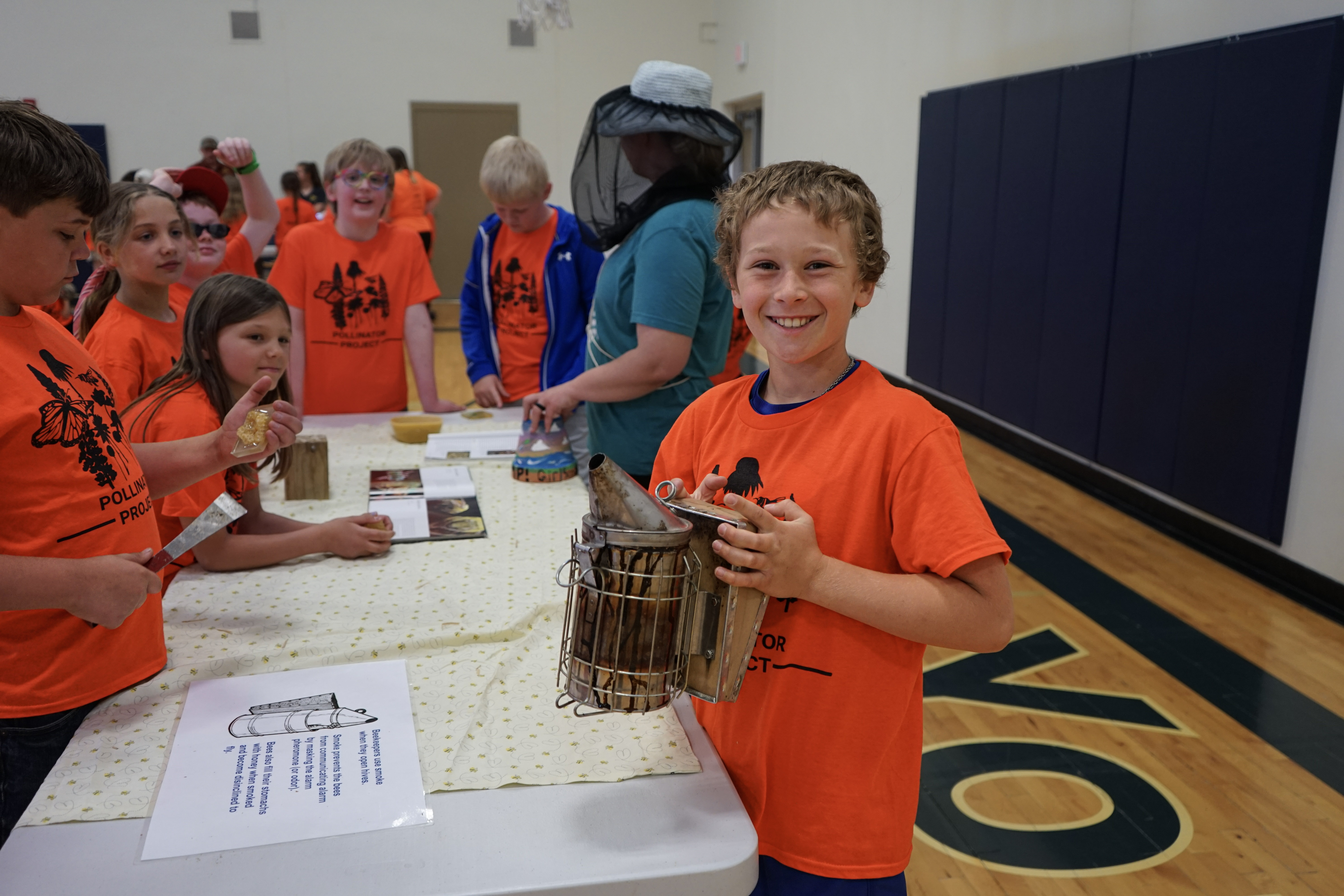
Another cool thing about bees? They can sense flowers through electromagnetic fields. Flowers have a slightly negative electric charge, due to their contact with the ground. Bees have a slightly positive electric charge due to their wings’ friction with the air. The difference in charges attracts bees to flowers like a magnet.
Sarah Bailey, an educator and naturalist with Prairie Plains Resource Institute, talked to kids about the importance of high-quality habitat for pollinators, including grasslands. Prairie ecosystems contain thousands of species of plants, insects, birds, mammals, and reptiles. Once upon a time, this part of Nebraska was mostly tallgrass prairie, but now only 1-2% of that vast sea of grass remains due to agricultural, municipal, and industrial development. Prairie Plains is dedicated to restoring Nebraska’s grasslands to provide necessary habitat for many species that depend on them. The plants are the base of the food chain and provide food and shelter for pollinators and other creatures, Bailey explained. While some prairie plants grow tall above ground, their root system extends even farther in the opposite direction--for some species up to 15 feet, she said. These incredible root structures help plants access moisture during drought as well as make the most of precipitation. The roots also hold plants in place during high wind events common in Nebraska.
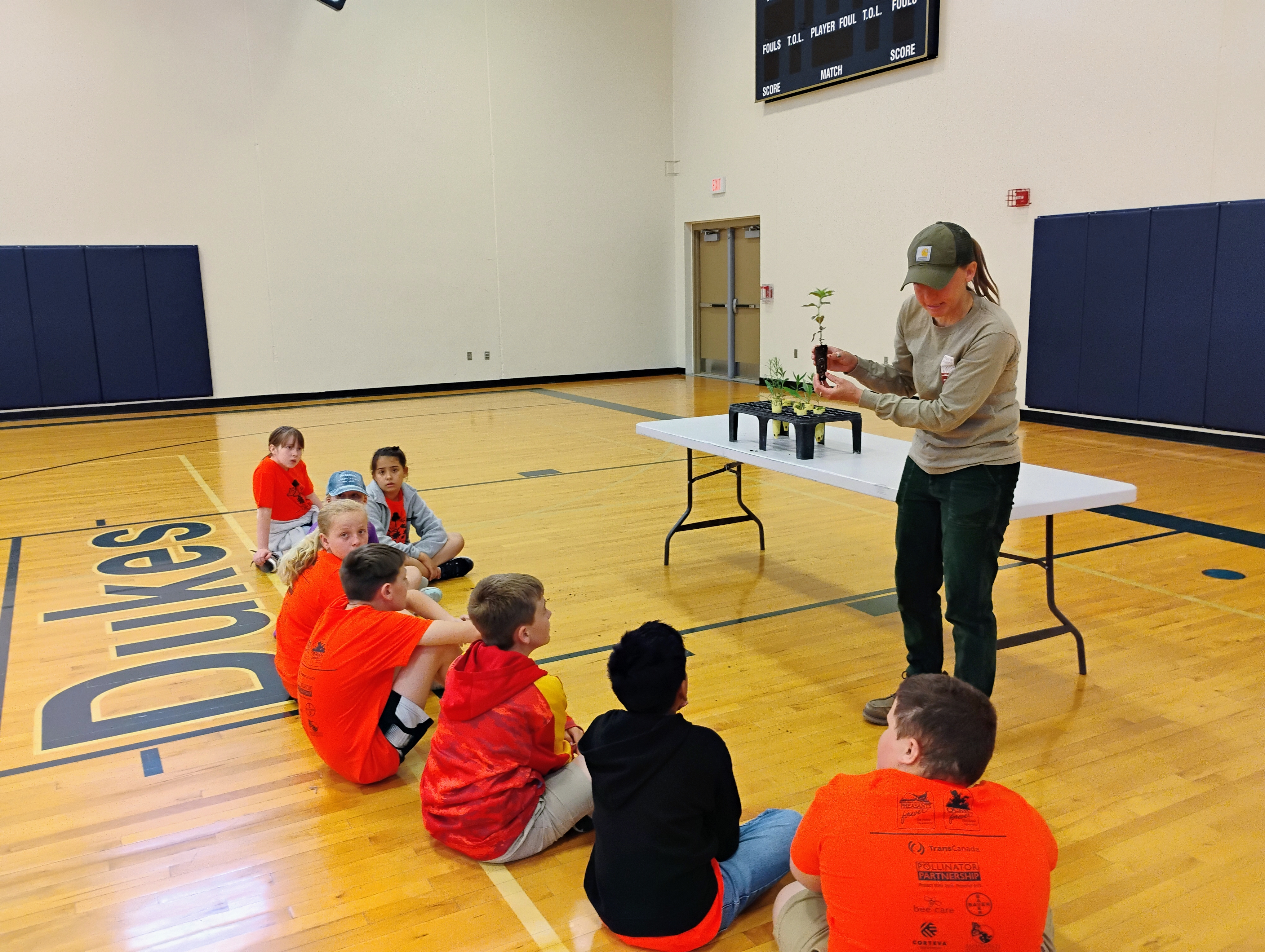
After learning all about how to support pollinators, students were bussed to an area east of town to translate their enthusiasm into practical action. Students were given pollinator seeds to hand broadcast as well as plants started in the greenhouse at Prairie Plains to place into pre-drilled holes. The 3.2-acre area they planted with 10 pounds of pollinator mix and 250 plant starts is part of the pollinator habitat area at Project GROW on the City of York wellfield. Project GROW is a collaboration between the City of York and the Upper Big Blue NRD that seeks to protect the drinking water supply for local residents through a focus on soil health.
Volunteers and staff with Pheasants Forever as well as staff from the Prairie Plains Resource Institute and the Upper Big Blue Natural Resources District, faculty and students from UNL, and teachers and other staff from the represented schools assisted the students with planting. Students tucked the tiny plants gently into the soil and teachers encouraged them to come back in a few months to see how much the area had grown and count the number of bees and butterflies feeding on the habitat they helped to establish.
